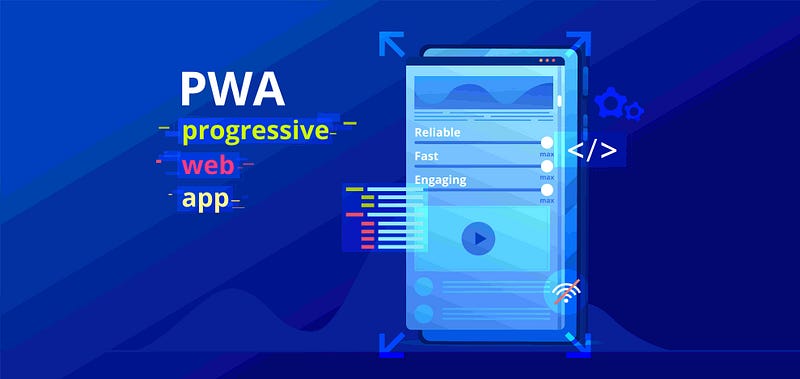Progressive Web Apps: Websites can be Native
 Charles Ilo
Charles Ilo
Progressive Web App (PWA) is a term that has gained significant traction in the web development industry. But what exactly is it, how does it work, and why is it something you will consider for a future project? This is where this article comes in, we will go through answers to these questions in a way that even a layman has a comprehensive understanding of what a PWA is.
Progressive Web App: What is it?
A Progressive Web App (PWA) is an application built using standard web technologies such as HTML, CSS, and JavaScript. However, unlike traditional websites, PWAs provide a user experience similar to that of platform-specific apps. This means they can be installed on a device, operate offline and in the background, and can integrate with the device and other installed apps.
It is intended to work on any platform that uses a standards-compliant browser, including both desktop and mobile devices. Imagine you’re using an app on your phone. It’s fast, works offline, sends you notifications, and can be accessed right from your home screen. Now imagine that this app is actually a website. That’s a PWA.
What makes up a PWA?
PWAs are made up of some key features, these features are essential to make an optimal application, they are:
Cross-Platform Compatibility
One of the main advantages of PWAs is their cross-platform compatibility. Since they are developed using standard web technologies, PWAs can run on multiple operating systems and device classes from a single codebase.
Installability
PWAs can be installed on the user’s device just like a native app. They get their own icon on the device, making it easy for users to find and open them.
Offline and Background Operation
PWAs can provide a good user experience even when the device has intermittent network connectivity. They can operate when the user is not interacting with them and when the device is offline.
OS Integration
PWAs can be integrated into the host operating system. For example, a messaging app can register as a share target, enabling users to select an image in the photo app and send it using the messaging app.
Distribution via Web
The web is a great distribution platform. Websites are indexed by search engines and can be shared and accessed just using URLs. A PWA can be distributed with no need to sign up to any vendor’s app store.
Creating a PWA
There are several essential steps involved in making a Progressive Web App. They are:
Use a HTTPS Server
The first step in creating a PWA is to ensure that your server supports HTTPS. This is because the service workers that power PWAs require a secure origin to function.
Develop an Application Shell
The application shell is the minimal HTML, CSS, and JavaScript required to power the user interface of a progressive web app. This shell should be the core of your user interface.
Add a Service Worker
Service workers are scripts that your browser runs in the background, separate from a web page. They enable features like offline support and resource caching which are fundamental to PWAs.
Install Push Notifications
Push notifications are messages that can be sent directly to a user’s desktop or mobile device. They are popular on mobile devices due to their ability to send timely, relevant information to users even when the app is not active.
Install a Web App Manifest
The web app manifest is a simple JSON file that tells the browser about your web application and how it should behave when ‘installed’ on the user’s mobile device or desktop. It includes information like the app name, icons, start URL, and more.
Setup the Installation Prompt
This prompt gives users the option to add the PWA to their device’s home screen. This makes it easy for users to access your app just like they would any other app on their device.
Analyze Your App’s Performance
Performance is critical for PWAs. Tools like Lighthouse can help in analyzing the performance and suggesting improvements. Regularly testing and optimizing your app ensures that it remains fast and responsive for your users.
Benefits and Conclusion
PWAs offer several benefits over traditional web apps. They can work offline, are installable, can receive push notifications, and are linkable, meaning they can be easily shared via URL. They offer a full-screen experience with help from a web app manifest file and can even re-engage users with web push notifications.
In conclusion, PWAs combine the best features of traditional websites and platform-specific apps. They offer an enhanced user experience, adaptability across different devices, offline capabilities, and much more. As web technologies continue to evolve, PWAs are set to play an increasingly important role in shaping the future of web development.
Subscribe to my newsletter
Read articles from Charles Ilo directly inside your inbox. Subscribe to the newsletter, and don't miss out.
Written by

Charles Ilo
Charles Ilo
Technical Writer and Web Developer